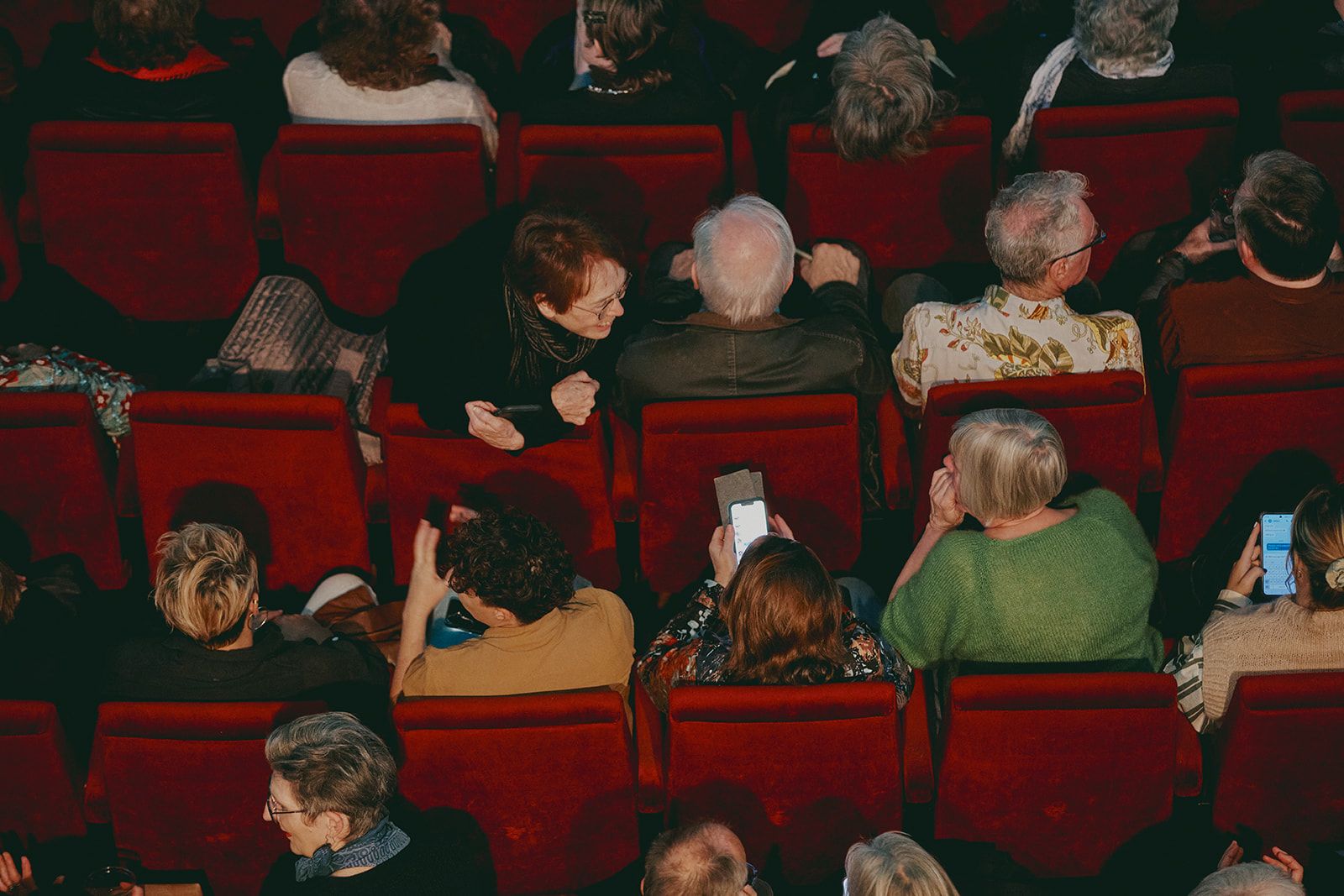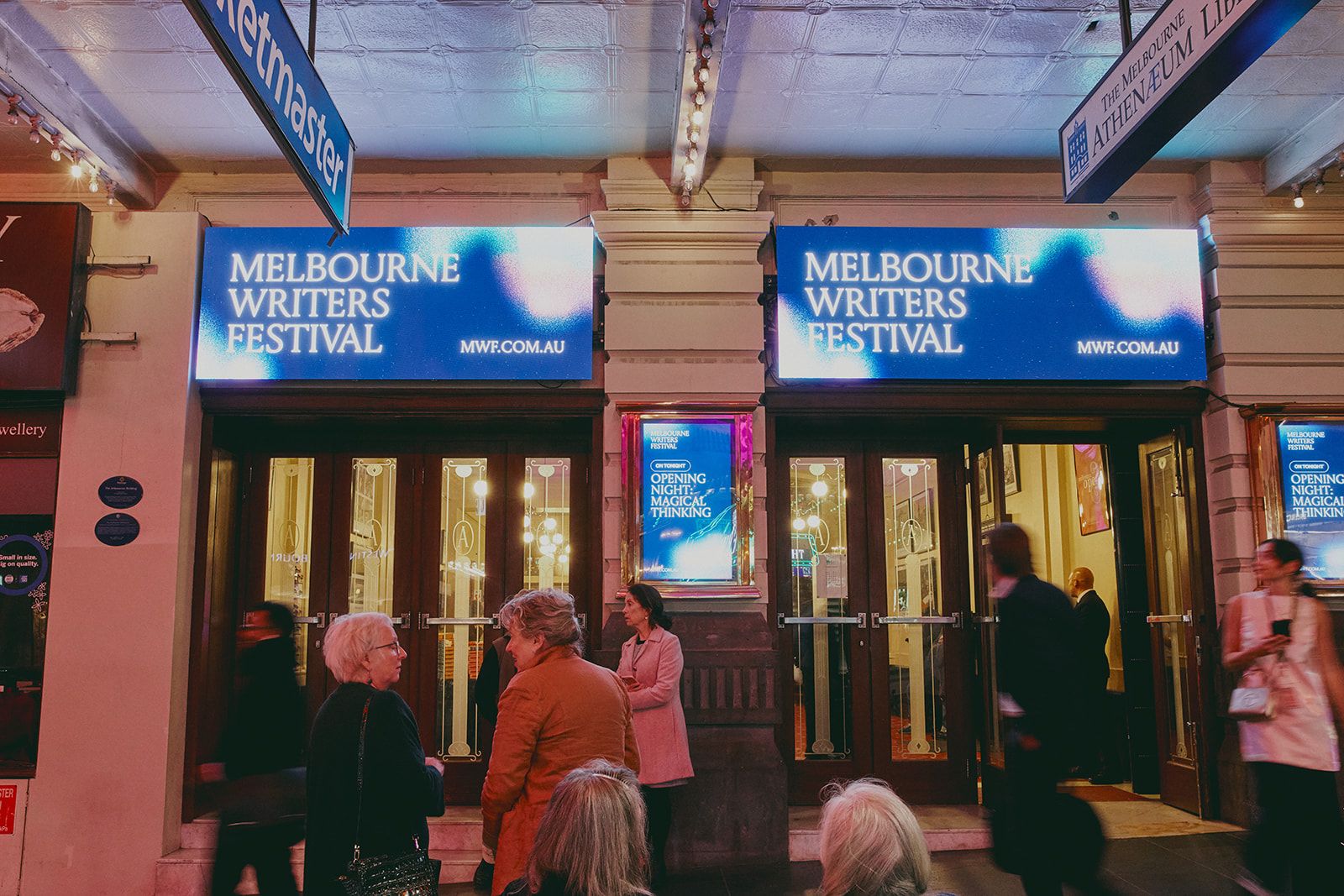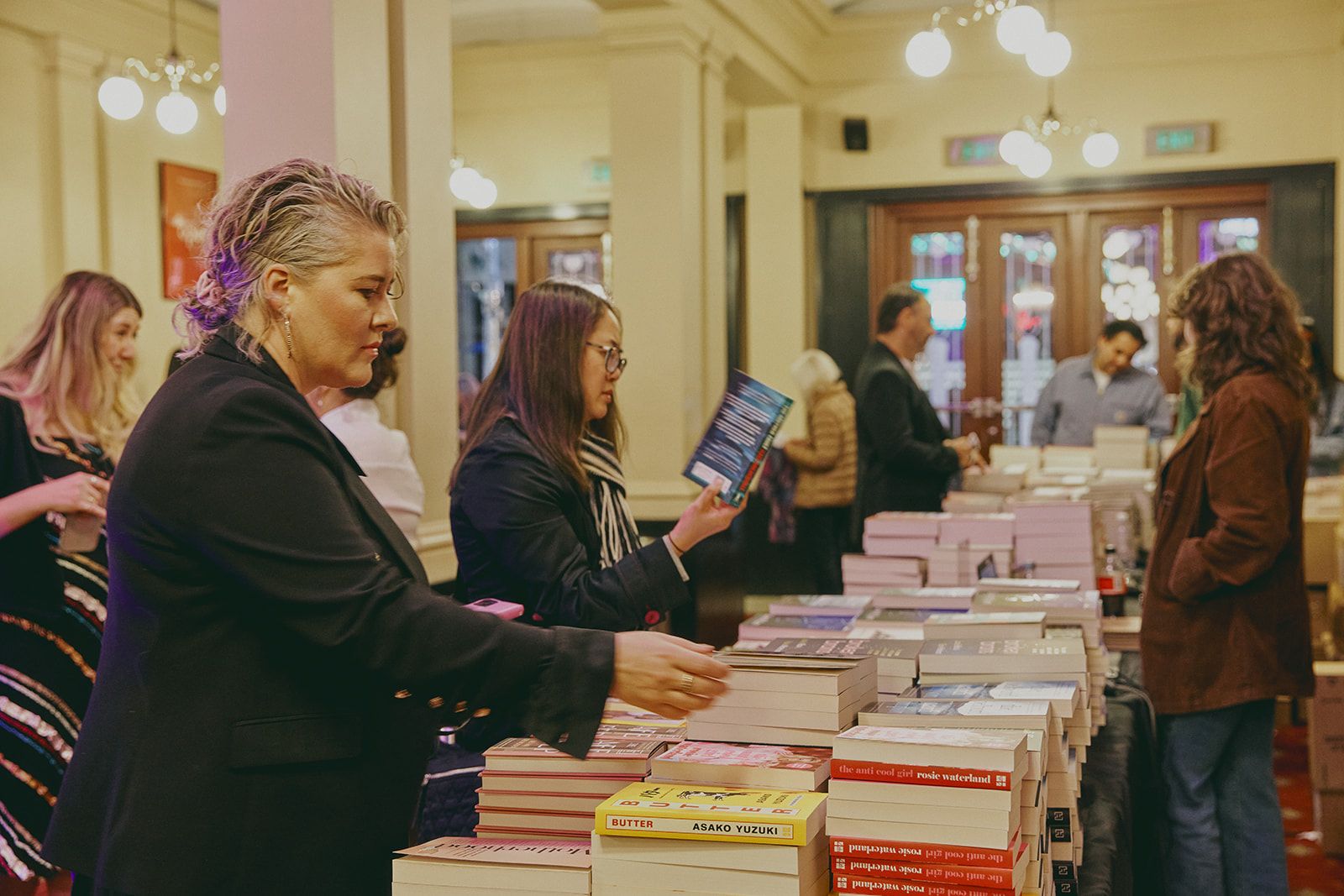MWF 2025 | Friday 9 May Recap

by Sonia Nair
Sonia Nair is a Melbourne-based critic whose writing has been published by The Age, the ABC, Time Out Melbourne, Kill Your Darlings and The Big Issue, among others.
It’s Literary Christmas. That time of year when you can’t move within a block of any Melbourne Writers Festival venue without bumping into friends new and old, and when certain decisions must be made for sustenance as you dash from one event to another.
The Wheeler Centre is transformed into an ethereal space for the night as Georgia (George) Kartas and Thabani Tshuma, curators of the much-loved quarterly poetry night Thin Red Lines, take to the stage to celebrate the event’s sixth birthday with a lineup of six writers from their past and future.
In a luminous opening address, Kartas and Tshuma posit that poetry is a celebration, a salve for living, a form of magic. It transgresses and reforms boundaries into something malleable and expansive, reflecting the truth that freedom and radical change lie “outside borders, strict rules and ideologies of concrete realities”.
The six poets featured employ poetry as both an archive and a way of pushing forward, collapsing time between what has been, what is, what can be and what always will be.
In her simultaneously precise and hypnotic cadence, writer and artist Manisha Anjali’s poetry is suffused with evocative imagery and stark truths as she incants from the future and from the past, the latter in the form of her critically acclaimed debut poetry collection Naag Mountain. Shifting the tonal register with her urgent and imposing missives, Emirati poet Afra Atiq commandingly states, “to be loud is to be heard” as she roars against being deemed “too much”.
Bundjalung and Kullilli writer, journalist and radio broadcaster Daniel Browing, one of two First Nations Curators at the festival, expounds on the “non-aphrodisiac power of poetry” – to guffaws from the audience – as he reflects on unrequited love and pens a riposte to the flawed philosophical premise that Blackfullas can’t be queer or gender-diverse.

In a masterful sleight of hand, Lebanese-Palestinian writer Hasib Hourani breaks up, reorders and fragments his debut book Rock Flight into a story that speaks to the past and future of a person displaced by empire. Similar themes are diffused through Vietnamese-Australian Nam Le’s two poems, dedicated to his mother and the two times she was forced to leave her home: first as a refugee, secondly and more recently as a resident of a high-rise public housing tower in Richmond.
The night culminates in Micaela Sahhar’s powerful, perfectly elocuted, deeply sorrowful reading from her recently released debut book Find Me at the Jaffa Gate, as she intersperses her words with that of Palestinian poet Taha Muhammad Ali and considers the notion of revenge.
With this magical evening of poetry running far longer than its stated hour, we hurriedly fuel ourselves with Wang’s Crispy Pancake – highly recommend for a delicious, quick snack – and power walk to the Athenaeum, where an hour of scintillating conversation unfolds in Cancelling Culture.
In an introduction to end all introductions, moderator Beejay Silcox illustrates the historical breadth, nuances and sociopolitical context of the age-old question that has been injected with an unparalleled fervour since the advent of the internet: can you separate the art from the artist?
Silcox is less interested in adjudicating a night of verdicts, a cultural courtroom or a one-size-fits-all approach to this question.
“The first thing we have to jettison is any form of moral certainty. This is not a place for resolution, but issue clarity. What are we really asking when we ask this question?”
Philosopher A.C. Grayling has a professional commitment to the complexity and ambiguity of this question, having just written the book Discriminations: Making Peace in the Culture War. He evokes the art of Ovid, Caravaggio and T.S. Elliot to draw a distinction between art that is so expressive of the views of the maker that it’s impossible to separate the two, and art that doesn’t.
Osman Faruqi, Tara Kenny and Silcox each reflect on the artists they’ve specifically grappled with in the light of their transgressions: Michael Jackson and Kanye for Faruqi, Germaine Greer for Kenny, and Alice Munro for Silcox.
And though there isn’t much moral certainty to be had when answering this amorphous question, Faruqi comes closest to elucidating a template for thinking about whether to consume the art of someone who’s done an ethically questionable thing.
“The only thing I feel really clear about is the financial, economic aspect of this. Financially supporting the work of people that we think are bad is different to this theoretical concept of art. Am I going beyond appreciating a piece of work and rewarding a person who will then use those resources to do bad things?” Faruqi asks, directly referencing JK Rowling.
The discursive conversation covers a lot of ground while feeling in-depth and considered. Kenny speaks about parasocial relationships and the conflation of artists’ social media presence with their lives, and makes the prescient point that the right has co-opted the idea of cancel culture to everyone’s detriment.
Faruqi talks about how art is consumed in a starkly different way now that “identities are shaped around artistic consumption”, but points out that the rise of this discourse can only be a good thing – marginalised people traditionally excluded from spheres of power now have a modicum of it due to social media, and are calling out unethical behaviour where it exists.
Grayling touches on the irrevocable change brought on by tectonic social transitions and brings up the inverse: what of someone like Oscar Wilde who was cancelled due to his queerness and the prosecution of a social certainty that was deemed irrefutable at the time?
Khaled Sabsabi is never far from the spectre, evoked often to illustrate the foolhardiness of equating discomfort and perceived unsafety with morally questionable behaviour.
“One thing that art can do is be beautiful and transcendent in the everyday, but it can also be ambiguous and confusing. The Sabsabi situation shows that we’re unwilling to do that as a society. People who are meant to be champion of artists are unwilling to allow art to be provocative and political.
Befitting that, the panel closes out with each member recommending a piece of art that’s disturbing and discomfiting without necessitating “cancellation” as it were. Much food for thought.
